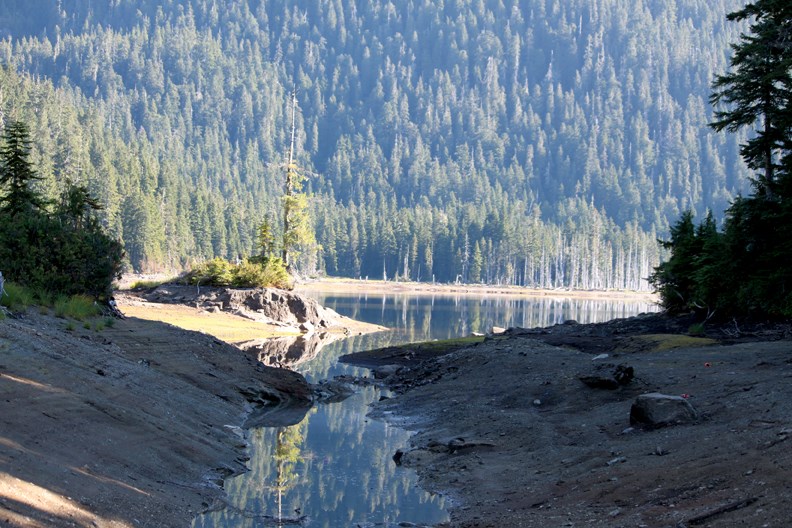Stage 4 water restrictions are not being ruled out as the Sunshine Coast Regional District (SCRD) weighs its options for dealing with diminishing water levels in Chapman Lake and a weather forecast with little rain.
“We are currently holding at Stage 3 and monitoring the situation. Staff are actively pre-paring for siphon installation so we can rapidly move to deployment if required,” said Michael Day, the SCRD’s general manager of infrastructure.
Day said the SCRD is concerned about the supply situation because “we’ve had very little rain in the last three months … which has resulted in the amount of water in the lake being quite low and continuing to decline. Potentially we might still need to move to Stage 4 and deploy the siphon for continued water supply. At this point we’re taking it a day at a time.”
Stage 4 calls for a ban on all outdoor water use.
SCRD staff is assessing whether there is a need to deploy a siphon at Chapman Lake as an interim measure to cope with drought conditions.
“We’re late in the season, which is an indicator that it may not be a good approach to deploy the siphon because it’s so late in the year,” Day said, explaining that if the water shortage had been dire in August, that would have made the argument for the deployment of the siphon much stronger.
Still, equipment and material are being moved to a staging area in the event that they are required.
The siphon will be expensive to set up and operate. The estimated cost to install the siphon has been pegged at $155,000 and the cost to operate is estimated at $15,000 a week.
But Day said costs are just one consideration. If the siphon is deployed, there will be a need for ongoing administrative dialogue with a variety of stakeholders including BC Parks and Sechelt First Nation. Ongoing environmental monitoring would also need to be done.
“That isn’t going to stop us from deploying [the siphon] but we have to be careful in making the decision to go that way,” Day said. If the SCRD does deploy the siphon, it will take about five days to set up and another day or two to test out.
“We know from history that if we had something like four to six consecutive days of significant rain in the watershed, the lakes would be full. In 2015 [the last time Level 4 water restrictions were put in place by the SCRD], there was a major four-day rain event and that filled up the lake,” Day said.
He noted that several smaller rain events could also ease the water woes.
Environment Canada said Wednesday that potentially 10 to 15 mm could fall on the Sunshine Coast Friday, Sept. 29 and there is a chance of showers the following Sunday and Monday, with up to two mm each day.
Day said that Stage 3 water restrictions were put in place much later this year compared to other years because “we had a really good snow pack and a late spring. We had full lakes until early June, which is late compared to other years. But since that time, we started using the water in the watershed 95 days ago and we’ve only had 75 mm of rain. People on the Sunshine Coast are familiar with the 2015 drought event and we had 70 mm of rain during that dry period.”



